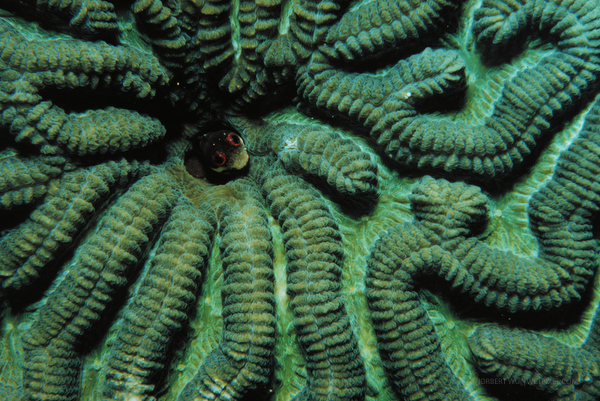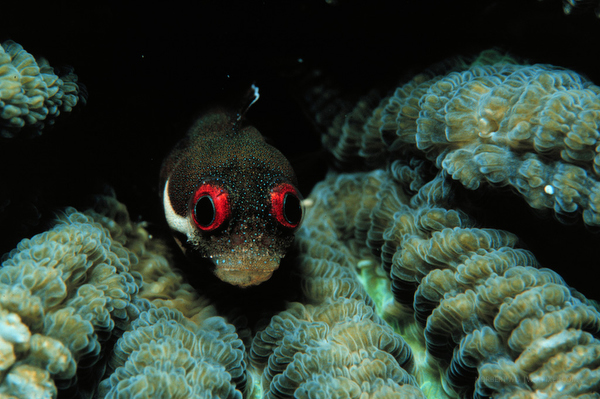Norbert Wu’s Favorite Images: My first photographs
Norbert Wu’s Favorite Images: My first photographs

At the age of six I wanted to become a marine biologist. As a teenager growing up in Atlanta, I spent summers snorkeling in Florida waters and became fascinated with wildlife. When the time came to choose a college, I went to California. Like all naive teenagers in Georgia, I thought that California meant beaches, sun, and warm water. I was in for quite a shock during my first encounter with the bone-chilling waters of Monterey Bay.
Once in college, deluged with the advice of dorm mates, professors, and parents, I decided on a degree in electrical engineering rather than a major in my lifelong interest of marine biology. I kept up my diving, however, and explored the waters of Monterey Bay after investing in a wetsuit and basic diving gear. The electrical engineering degree was a pragmatic choice; the job situation seemed much better, and I always figured I could go back into marine biology. The situation seemed the same after four years, and so I obtained a master’s degree in engineering and got my first steady job as a computer engineer in Silicon Valley. The job paid well, my boss was easygoing, and the work was routine and not stressful. Of course, I got bored. My thoughts kept wandering to tropical breezes and coral reefs. After nine months as a corporate player, I took an extremely low-paying job as a research diver with the Smithsonian Tropical Research Institute one one of the San Blas Islands of Panama.
This time I had been much more careful in my choice of dive sites. The island is about 100 square feet of sand, and the researchers lived in bamboo and plywood huts right above the water. Most importantly, the water is warm there, and I had all the time in the world to dive. Prior to this trip, I never had the slightest interest in photography. But before heading south, I bought as many books as I could find on the subject, as well as an underwater flash and Nikonos camera system with extension tubes and close-up attachment. For the four months that I was out in the San Blas, I only shot about ten rolls of film. However, the photographs from those rolls have been published over and over again. Because I was diving the reefs every day, I knew their inhabitants intimately. I was able to return to photograph an octopus, a flamingo tongue (a snail with a spectacular shell), and a spotjaw blenny again and again over the course of my four-month stay. This in-depth look at marine life’s habits and behaviors has become my specialty. Being able to spend weeks working on a project rather than a few hurried weekends has made a big difference in the quality and content of my photographs.
These images of a spotjaw blenny were among the first I ever took. The closeup has been used as the cover for a NOVA show on coral reefs among other publications.

Using a Nikonos IV-A camera with extension tubes to capture these was incredibly limiting. You had to swim around with a camera that had metal framers extending from the lens. You could only take photos of subjects that would fit within this frame area. Despite these limitations, or maybe because of them, I ended up taking a lot of very nice macro (closeup) shots that are probably better than the ones I take today with my fancy digital SLR housed systems.
About the author:
Norbert Wu is an independent photographer and filmmaker who specializes in marine issues. His writing and photography have appeared in thousands of books, films, and magazines. He is the author and photographer of seventeen books on wildlife and photography and the originator and photographer for several children’s book series on the oceans. Exhibits of his work have been shown at the American Museum of Natural History, the California Academy of Sciences, the National Academy of Sciences, and the National Museum of Wildlife Art.
He was awarded National Science Foundation (NSF) Artists and Writers Grants to document wildlife and research in Antarctica in 1997, 1999, and 2000. In 2000, he was awarded the Antarctica Service Medal of the United States of America “for his contributions to exploration and science in the U.S. Antarctic Program.” His films include a pioneering high-definition television (HDTV) program on Antarctic’s underwater world for Thirteen/WNET New York’s Nature series that airs on PBS.
He is one of only two photographers to have been awarded a Pew Marine Conservation Fellowship, the world’s most prestigious award in ocean conservation and outreach. He was named “Outstanding Photographer of the Year” for 2004 by the North American Nature Photographers Association (NANPA), the highest honor an American nature photographer can be given by his peers.